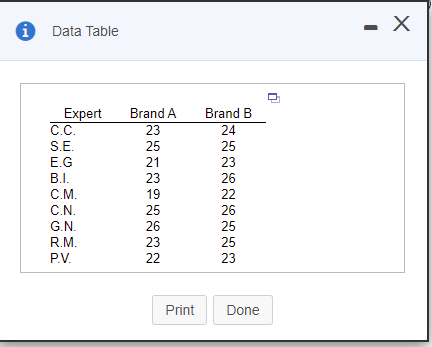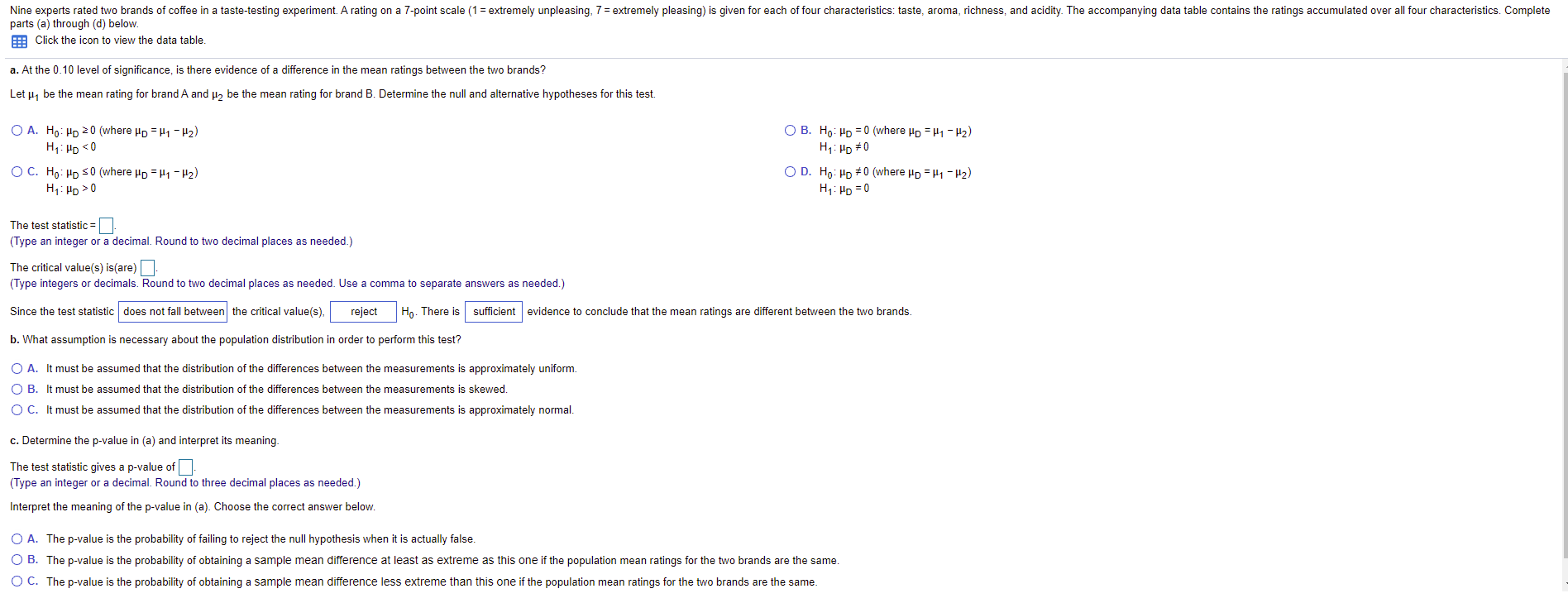Answered step by step
Verified Expert Solution
Question
1 Approved Answer
Nine experts rated two brands of coffee in ataste-testing experiment. A rating on a7-point scale (1=extremely unpleasing, 7=extremely pleasing) is given for each of fourcharacteristics:
Nine experts rated two brands of coffee in ataste-testing experiment. A rating on a7-point scale (1=extremely unpleasing, 7=extremely pleasing) is given for each of fourcharacteristics: taste,aroma, richness, and acidity. The accompanying data table contains the ratings accumulated over all four characteristics. Complete parts(a) through(d) below.


Step by Step Solution
There are 3 Steps involved in it
Step: 1

Get Instant Access to Expert-Tailored Solutions
See step-by-step solutions with expert insights and AI powered tools for academic success
Step: 2

Step: 3

Ace Your Homework with AI
Get the answers you need in no time with our AI-driven, step-by-step assistance
Get Started


